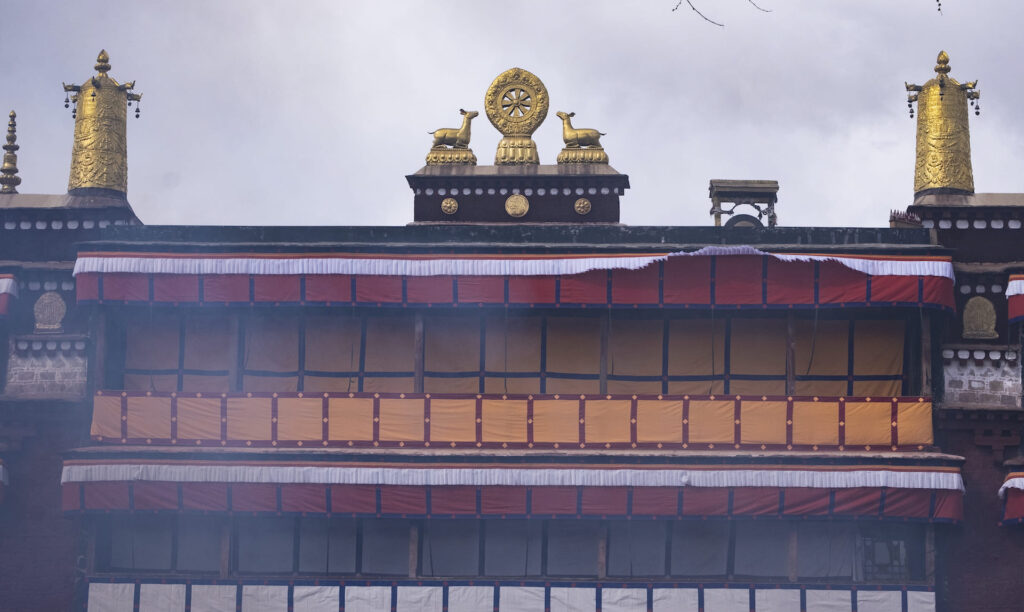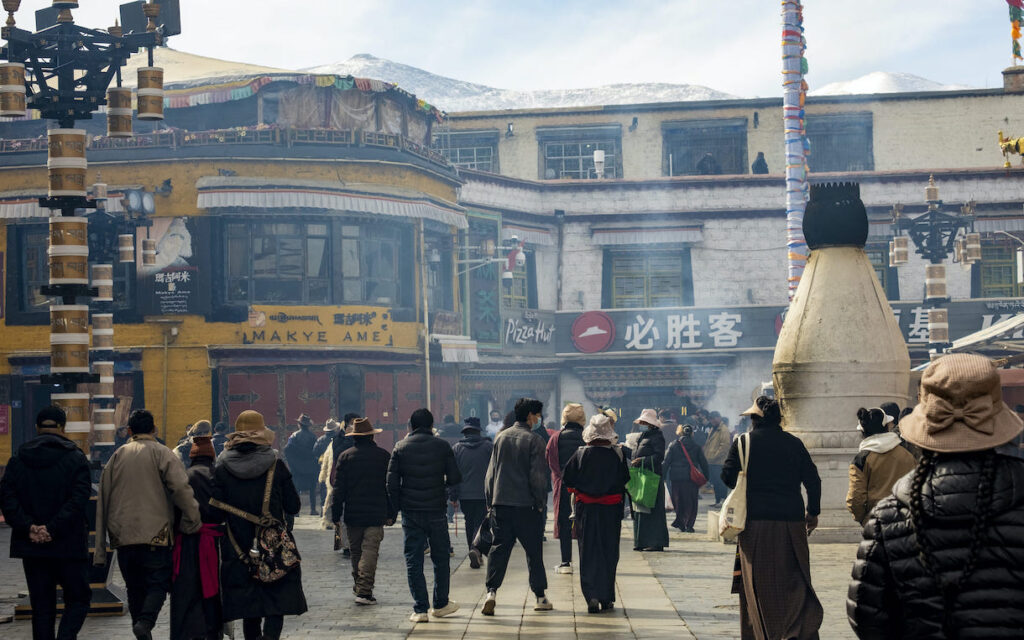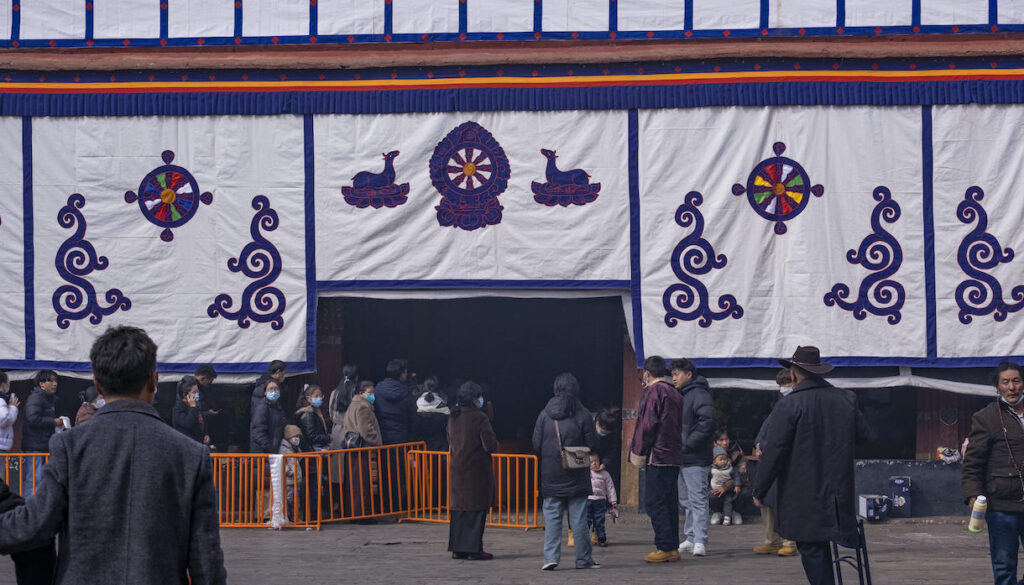Traveling to Tibet in winter requires some careful planning and preparation. Here are some essential tips to help you make the most of your Tibet winter journey to this enchanting destination:
Tibet Winter trip
- Obtain the necessary permits: Tibet requires special permits for foreign travelers, and it’s important to obtain them in advance. You will need a Tibet Travel Permit, which can be arranged through a registered travel agency in Tibet. Additionally, if you plan to visit certain restricted areas, such as Mount Everest or Mount Kailash, you will need additional permits.
- Choose the right entry point: The most common entry points to Tibet are Lhasa and Kathmandu. During winter, flights to Lhasa are more reliable than road travel, as the mountain passes may be affected by snowfall. If you choose to fly, make sure to book your tickets well in advance.
- Pack appropriate clothing: Winter in Tibet can be extremely cold, especially at higher altitudes. Pack warm clothing, including thermal layers, down jackets, hats, gloves, and sturdy waterproof boots. It’s also advisable to bring sunscreen, lip balm, and sunglasses to protect yourself from the strong UV rays at high altitudes.
- Acclimatize properly: Tibet’s high altitude can pose a challenge for some travelers. It’s important to acclimatize properly to avoid altitude sickness. Spend a few days in Lhasa or other lower-altitude areas before heading to higher regions. Stay hydrated, avoid strenuous activities in the first few days, and consult with your doctor about any necessary medications.
- Plan your itinerary: Winter in Tibet offers unique opportunities, but it’s important to plan your itinerary carefully. Some areas may be inaccessible due to heavy snowfall, and road conditions can be challenging. Consult with a local travel agency to design a suitable itinerary that takes into account weather conditions and road accessibility.
- Experience local festivals: Winter is a festive time in Tibet, with Losar (Tibetan New Year) being the most important celebration. If your travel dates align with Losar, make sure to witness the colorful festivities and traditional rituals. It’s a fantastic opportunity to immerse yourself in Tibetan culture and witness the locals’ joyful spirit.
- Stay warm and hydrated: In the cold weather, it’s crucial to stay warm and hydrated. Drink plenty of fluids, even if you don’t feel thirsty. Carry a thermos with hot water or herbal tea to keep yourself warm throughout the day. Eat warm, nourishing meals to maintain your energy levels.
- Respect local customs and traditions: Tibet has a rich cultural heritage, and it’s important to respect local customs and traditions. Dress modestly, be mindful of your behavior in monasteries and sacred sites, and seek permission before taking photographs of people or religious artifacts.
By following these tips, you can have a safe and memorable winter journey to Tibet. Embrace the unique beauty of the winter landscapes, immerse yourself in the local culture, and create lifelong memories in this enchanting destination.

why you should consider visiting Tibet during the winter months:
Here are some compelling reasons why you should consider visiting Tibet during the winter months:
- Serene and Tranquil Landscapes: Winter transforms Tibet into a serene and tranquil wonderland. The snow-capped mountains, frozen lakes, and pristine landscapes create a picturesque setting that is simply breathtaking. The absence of crowds allows you to fully immerse yourself in the beauty of nature and appreciate the peacefulness of the surroundings.
- Vibrant Festivals and Celebrations: Winter is a festive time in Tibet, with Losar (Tibetan New Year) being the most significant celebration. During Losar, you can witness colorful parades, traditional dances, and intricate rituals. It’s a fantastic opportunity to experience the vibrant Tibetan culture and witness the locals’ joyful spirit as they welcome the new year.
- Intimate Monastery Visits: Tibet is renowned for its ancient monasteries, and winter offers a chance to explore them in a more intimate setting. With fewer tourists around, you can fully appreciate the spiritual ambiance, have more meaningful interactions with the monks, and witness their daily rituals. It’s a unique opportunity to delve deeper into Tibetan Buddhism and gain a profound understanding of the local traditions.
- Hot Springs and Wellness: Winter in Tibet may be chilly, but the region is dotted with natural hot springs that provide a perfect respite from the cold. Soaking in the warm mineral-rich waters surrounded by snow-covered landscapes is not only incredibly relaxing but also believed to have therapeutic benefits for both the body and mind. It’s a wonderful way to rejuvenate and unwind during your winter journey.
- Authentic Tibetan Cuisine: Winter is the perfect time to indulge in hearty and warming Tibetan cuisine. Traditional dishes like Thukpa (noodle soup), momos (dumplings), and butter tea are not only delicious but also help keep you warm in the chilly weather. Exploring the local food scene and trying authentic Tibetan delicacies is an essential part of any winter tour in Tibet.
- Unique Photography Opportunities: Winter landscapes in Tibet offer photographers a wealth of unique and stunning opportunities. The snow-covered mountains, frozen lakes, and clear blue skies create a dramatic backdrop for capturing breathtaking shots. Whether you’re a professional photographer or simply enjoy capturing beautiful moments, Tibet in winter will provide you with unforgettable images.
- Authentic Cultural Experiences: With fewer tourists during the winter season, you have a better chance of engaging with the local Tibetan people on a more personal level. You can witness their daily lives, participate in traditional activities, and gain a deeper understanding of their rich cultural heritage. It’s an opportunity to forge genuine connections and create lasting memories.
Traveling to Tibet in winter allows you to witness the region’s natural beauty, immerse yourself in its vibrant culture, and experience a sense of tranquility that is truly unique. So, bundle up, embrace the winter wonderland, and embark on an unforgettable journey to the roof of the world.

What is the cost for Tibet winter tours?
The cost of winter tours in Tibet can vary depending on various factors such as the duration of the tour, the level of accommodation, the activities included, and the travel agency you choose. It’s important to note that prices can fluctuate, so it’s best to consult with a reputable travel agency for the most accurate and up-to-date information.
As a general guideline, a basic winter tour package in Tibet can start from around $600 to $1,500 per person for a 7-10 day trip. This usually includes accommodation, transportation within Tibet, permits, and a guide. However, it’s important to consider additional expenses such as international flights, meals, entrance fees to attractions, and travel insurance.
If you prefer a more luxurious experience with higher-end accommodations and additional activities, the cost can increase accordingly. On the other hand, if you’re a budget traveler, there are options available that offer more affordable tour packages.
To get an accurate cost estimate for your specific travel preferences and requirements, it’s recommended to reach out to reputable travel agencies specializing in Tibet tours. They can provide you with detailed itineraries and pricing options based on your desired travel dates and preferences.

Conclusion
Remember, when planning your trip, it’s essential to consider the value and quality of the services provided by the travel agency. Look for agencies with good reviews, experienced guides, and a strong reputation for providing excellent customer service.
Ultimately, the cost of a winter tour in Tibet is an investment in a unique and unforgettable experience, allowing you to explore the stunning landscapes, immerse yourself in the local culture, and create lifelong memories in this enchanting destination.

[…] Winter in Tibet brings sub-zero temperatures, especially during the night. While daytime temperatures can be relatively mild, travelers need to be prepared for chilly evenings and mornings. Layers of warm clothing, including insulated jackets and thermal wear, become essential to stay comfortable in the cold. […]